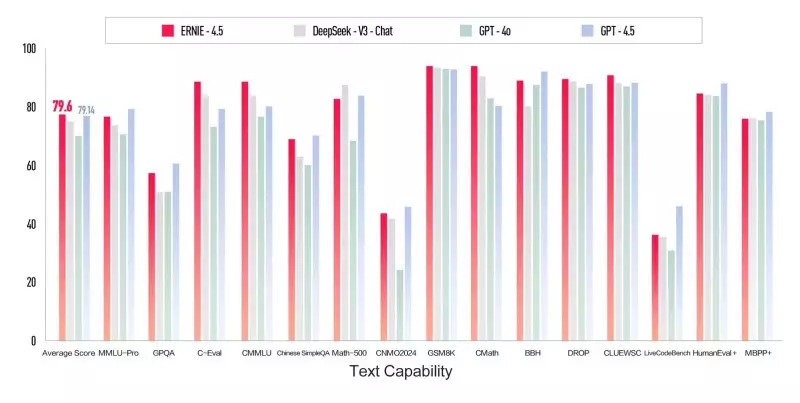Baidu, a titan in China’s tech landscape, has taken a significant stride forward with the unveiling of its ERNIE 4.5 and ERNIE X1 models. These AI innovations are being marketed as formidable competitors to established players such as OpenAI, raising the stakes in the rapidly evolving field of artificial intelligence. The claims are ambitious; Baidu asserts its products deliver superior performance across multiple modalities—text, images, audio, and video. Such claims garner attention and suggest that Baidu is not merely a follower in the AI race but a serious contender aiming to reshape industry norms. However, beneath this glossy surface lies a myriad of challenges that warrant careful consideration.
Pricing: A Double-Edged Sword
One of the most alluring aspects of the ERNIE designs is their competitive pricing strategy. With costs significantly lower than those of their rivals—ERNIE X1 reportedly priced 50% less than DeepSeek R1 and an astonishing 99% cheaper than OpenAI’s GPT-4.5—it’s tempting for corporations to see this as an opportunity to enhance productivity without breaking the bank. Yet, the very low pricing is a red flag. Businesses may wonder how Baidu can maintain such competitive prices while also ensuring robustness and sustainability in its AI infrastructure. Often, prices this low can be indicative of an undercurrent of compromised quality or limited scalability, which could jeopardize long-term adoption.
Performance Claims Under Scrutiny
While Baidu’s bold assertions point to impressive results on third-party benchmarks like C-Eval, CMMLU, and GSM8K, these claims demand rigorous scrutiny. The stark reality is that the token limit of ERNIE models stands at a mere 8,000 compared to the awe-inspiring 128,000 tokens available in OpenAI’s offerings. This severe limitation raises questions regarding the scalability and practical utility of the ERNIE models in real-world applications that demand extensive context. In evaluating these models, one must not be dazzled by the flashy marketing or the allure of initial cost savings, but rather engage in a comprehensive assessment of performance metrics tailored to specific organizational needs.
A Focused Approach: Advantages and Limitations
What differentiates the ERNIE models from other contenders is their specific design aimed at targeted applications. For instance, ERNIE 4.5 particularly aids sectors like customer service and financial technology, while ERNIE X1 shines in intricate reasoning functions such as document-based Q&A and code execution. This targeted adaptability is a strong positive; organizations could leverage these specific features for improved efficiency. However, such a focus may also be limiting. Companies with broader AI needs might feel that these narrow capabilities do not adequately address their diverse operational demands.
This situation creates a dilemma: should firms invest in an arguably limited product that excels in particular functions, or should they hold out for an all-encompassing solution? While Baidu’s commitment to advancing AI with technologies like Progressive Reinforcement Learning and Self-feedback Enhanced Post-Training should be commended, it begs the question of whether these innovations will be sufficient in an increasingly complex AI ecosystem.
Accessibility vs. Transparency: The Open-Source Debate
The availability of the ERNIE models through the ERNIE Bot interface is certainly applaudable, aimed not only at democratizing access to AI technology but also enabling broader application across various sectors. However, the decision to not embrace an open-source licensing model for ERNIE 4.5 puts Baidu at a strategic disadvantage. Open-source AI frameworks like DeepSeek R1 foster innovation, allowing developers to tinker and enhance functionalities more freely than a closed model would permit. Without the flexibility that comes from open-source, Baidu risks alienating a segment of the tech community that thrives on collaboration and shared improvements.
The Localization Challenge in a Global Market
Another point of consideration is the apparent optimization for the Chinese language. While this may serve Baidu exceptionally well within China, it introduces several barriers for international firms looking to leverage these models. The need for effective cross-lingual functionality could prove to be a stumbling block for businesses operating in diverse linguistic landscapes. Bridging these gaps without compromising performance will be a formidable challenge in the quest for global competitiveness.
Licensing and Privacy Concerns
As firms weigh the merits of integrating ERNIE models into their operations, issues surrounding licensing and data privacy come to the forefront. The anticipated promise of open-sourcing ERNIE 4.5 by mid-2025 gives a flicker of hope, but for companies eager to utilize AI tools now, this wait may seem imprudent. Organizations equipped for immediate implementation should concern themselves with how data integrity and privacy protocols stack up against their specific requirements, particularly in an age where data breaches and compliance are critical considerations.
While Baidu’s latest foray into AI is admirable, it is laden with complexities that could dilute the advantages touted in their marketing campaigns. The future remains uncertain for organizations looking to adopt ERNIE, requiring a balanced evaluation of both benefits and limitations.









Leave a Reply